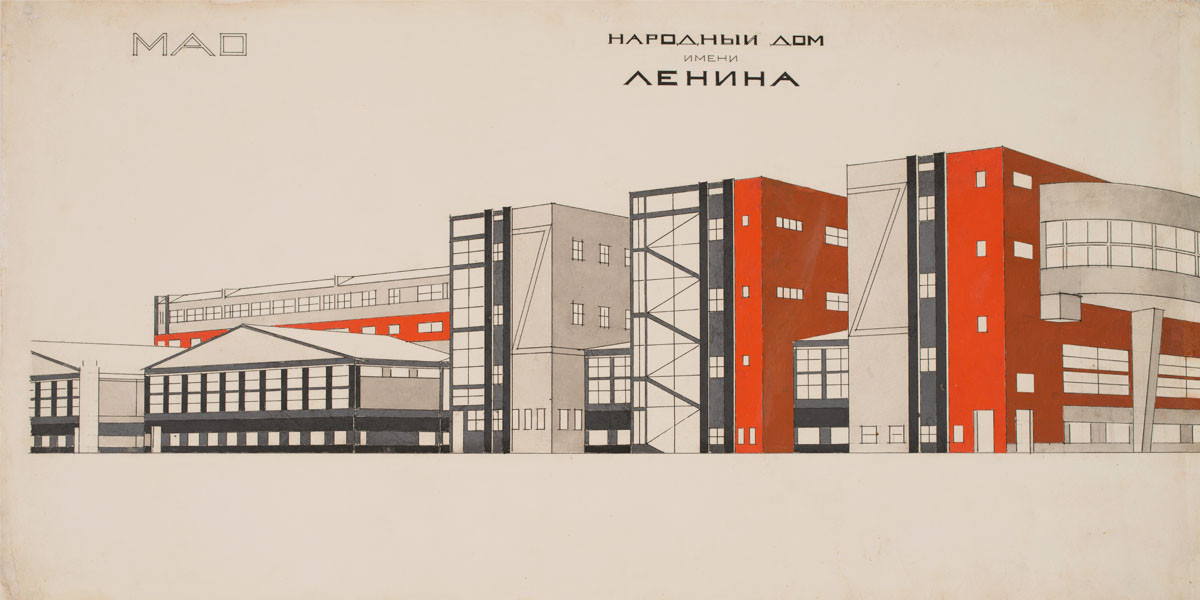Palladio in Russia
An Italian architect of the late Renaissance Andrea Palladio (1508-1580) unconditionally accepted by all art historians as the most influential architect in the world. For Russia Palladio has always had a special meaning – «palladianism» defined not only Russian architecture, but many in the Russian consciousness and being. In September-November of 2014 the exhibition ‘Palladio in Russia. From Baroque to Modernism / Russia Palladiana. Palladio e la Russia dal Barocco al Modernismo’ was being held in Museum Correr in Venice. It was organized by the State Museum and Exhibition Center "ROSIZO" with the participation of the Schusev State Museum of Architecture. This project of the Ministry of Culture of the Russian Federation, realized as a part of the Italy-Russia Year of Tourism 2014, caused a great interest among the Italian public. Now it’s possible to see it in Moscow: an extended version of the project will be displayed at two places at the same time: the Museum ‘Tsaritsyno’ and the Schusev State Museum of Architecture.
The exposition in Tsaritsyno dedicated to the history of Russian «palladianism» until 1917. Firstly the name “Palladio” was written in Russian in the title of the manuscript in 1699, attributed to one of the Princes Dolgorukov, associate of Peter I. The value of the manuscript is enormous. It is the first treatise about architecture in Russian: the name Palladio in Russia immediately marked the Architecture.
The passion for Palladian architecture in Russia reached its peak under Catherine II. She invited two famous architects of this time to Russia: Charles Cameron in 1779 and Giacomo Quarenghi in 1780. At the Catherine’s time a wonderful Russian architect Nikolai Lvov was formed. These three great architects and true Palladio’s followers identified Neoclassicism — the style that prevailed in Russian architecture until the 1830s. "In my homeland shall be Palladian taste" – thus Russian architect Lvov formulated his task. Intensive construction started all over Russia in the Catherine's time that transformed its architectural appearance, is inextricably linked with the name of Vicenza’s citizen. Palladian images are easy to read in a variety of buildings: churches, palaces, public buildings, private houses. Villa Rotonda without exaggeration can be called the most significant architectural image for Russian neoclassicism time, not without reason it’s served as an example for the Hagia Sophia, the sign of utopian Greek project of Catherine II, and for the imperial residences. The image of the manor house with a pediment and portico reflecting in water surface - a purely Russian Palladian sign of the Golden Age, as it is called in Russia the first half of the XIX century.
Around 1900 the passion for Palladio flared up with new force. The interest of Russian modern style in neoclassical style of the XVIII century and empire style, combined with nostalgia for the past culture of the manors, made Palladianism an integral part of the culture of the Silver Age.
Soviet Palladianism of the 20th century represented by the Schusev State Museum of Architecture is truly phenomenal. Architects Zholtovsky, Fomin, and Schusev, who had started their own careers before the revolution continued to design architecture imbued with the spirit of Palladio in the Soviet period. Laconism of Palladian style actually seemed very close to the revolutionary aesthetic of the Avant-garde school (it is known, the architect Konstantin Melnikov was a fervent admirer of Palladio’s work). And even in architecture of the Stalin period, born of a complex fusion between Neoclassicism and Avant-garde, the influence of Palladio is perceptible. A special exhibition hall dedicated to the works of I. Zholtovsky, the most consistent follower of Palladio. The exhibition ends with a project by A. Brodsky created at the start of the third millennium.
For the first time the exposition allows us to trace the whole 300-years history of Russian Palladianism including a large number of unpublished and unknown to the audience materials from the collections of Russian museums and archives. Palladio’s influence went well beyond the borders of architecture. And for this reason the exhibition presents not only drawings, projects, sketches and models of architectural works, but also paintings and graphic works by such great masters as Levitsky, Borovikovsky, Soroka, Borisov-Musatov, Sudeikin, Grabar, Benois, Dobuzhinsky, Kandinsky and Suetin.
The exhibition presents works from the collections of the Schusev State Museum of Architecture, the State Museum ‘Tsaritsyno’, the State Historical Museum, the State Tretyakov Gallery, the Moscow Museum Estate ‘Ostankino’, the State Museum of Ceramics and the Kuskovo 18th-century Estate, the State Museum Estate ‘Arkhangelskoye’, the Russian State Archive of Ancient Documents, the State Museum of A.S. Pushkin, the State Hermitage, The State Russian Museum, the State Museum of History of Saint-Petersburg, the State Literature Museum, The Research Museum of Russian Academy of Fine Arts and its branch - the Museum Apartment of Brodsky, the State Museum ‘Peterhof’, the State Museum ‘Pavlovsk’, the State Museum ‘Tsarskoye Selo’, the National Library of Russia, the Russian State Library, the Library of Russian Academy of Science, the Tver Regional Fine Art Gallery, the Cherepovets Museum Union, the Pskov United Museum of History, Architecture and Fine Art, the Contemporary Art Museum of Perm and from private collections.
